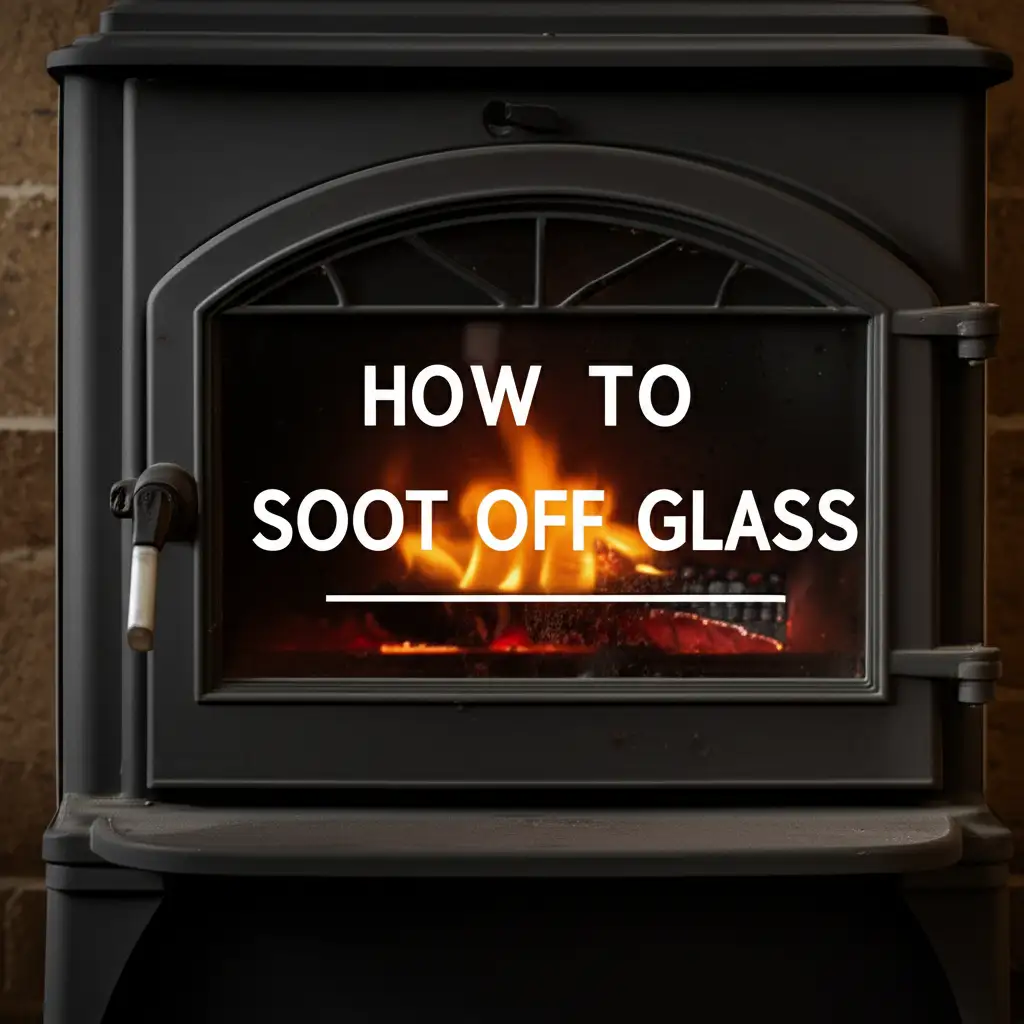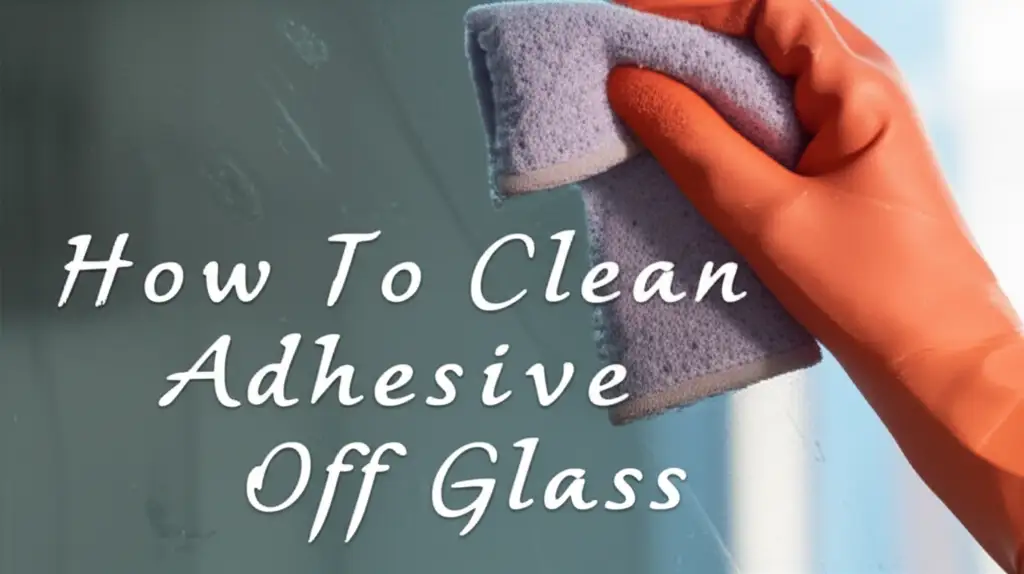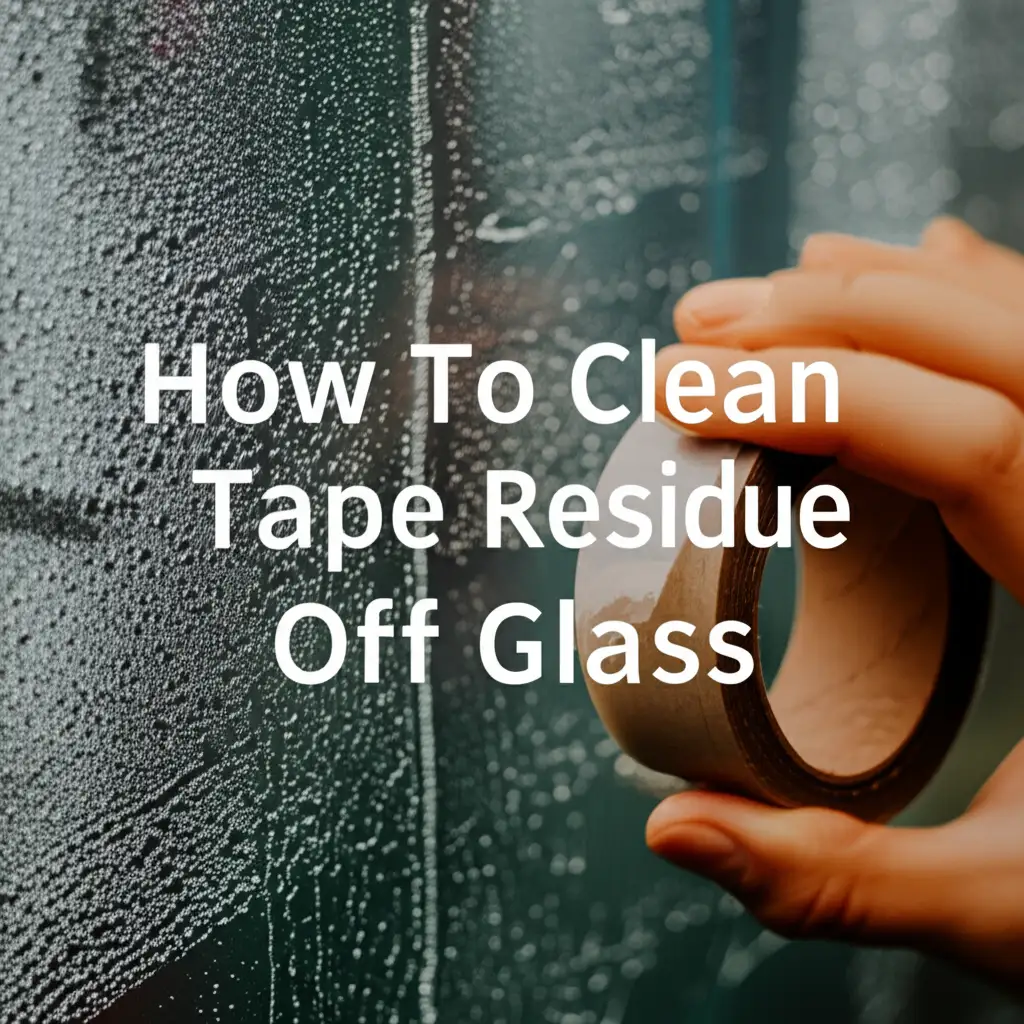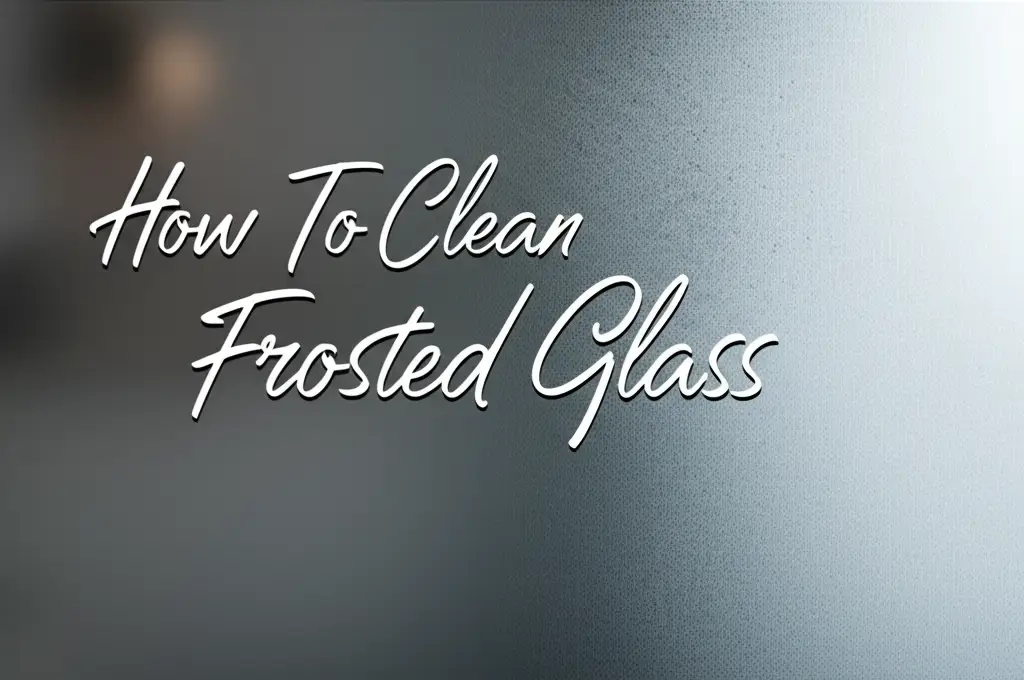· Home Cleaning · 13 min read
How To Clean Soot Off Glass

Clean Soot Off Glass: Your Ultimate Guide
Soot on glass surfaces creates a frustrating problem. It obscures views and leaves behind a greasy, dark film. Many people experience this issue with fireplace doors, candle holders, or oil lamps. The right cleaning methods make a big difference. I want to help you tackle this messy challenge. This guide offers practical steps to clean soot off glass effectively. You will learn about safe practices and helpful cleaning solutions.
Takeaway:
- Protect yourself and surrounding areas before you start.
- Start with dry cleaning methods to remove loose soot.
- Use natural solutions like vinegar or baking soda for effective removal.
- Consider commercial cleaners for very stubborn soot.
- Prevent future soot buildup with proper maintenance.
To clean soot off glass, first remove loose particles with a dry cloth or vacuum. Then, apply a gentle abrasive paste of baking soda and water or a vinegar solution. Scrub the affected area carefully with a soft sponge. Rinse the glass with clean water. Finally, buff the surface dry for a streak-free shine.
Understanding Soot on Glass
Soot forms from incomplete combustion. It is a powdery black residue. This substance consists mostly of carbon particles. Soot feels greasy because it contains oils and tars. This makes it challenging to clean.
Common sources of soot on glass include fireplaces and wood-burning stoves. Candles also produce soot, especially when wicks are too long or burning conditions are poor. Oil lamps and kerosene heaters can also leave soot stains. Different types of glass may react differently to soot. Some glass surfaces are more porous. This allows soot to cling more tightly.
Soot can also damage glass. The acidic nature of some soot can etch surfaces over time. It reduces visibility and creates an unclean appearance. Removing soot regularly protects your glass. It also maintains a clear view. Addressing soot early prevents it from hardening. Hardened soot becomes much harder to remove. I always recommend quick action.
Soot is not just dirt. It is a complex mixture. It requires specific cleaning approaches. Standard window cleaners often smear soot. They do not remove it effectively. Knowing soot’s properties helps you choose the right tools. It also ensures a better cleaning outcome.
Safety First: Preparing for Soot Removal
Cleaning soot can be messy and hazardous. Safety must always be your top priority. Soot contains fine particles. These particles can irritate your skin, eyes, and lungs. Always wear protective gear before you start cleaning.
I recommend wearing gloves. Heavy-duty rubber gloves protect your hands from chemicals and soot. Safety glasses shield your eyes from dust and splashes. A respirator or dust mask prevents you from inhaling soot particles. This is especially important for large areas of soot. Proper ventilation is also crucial. Open windows and doors in the cleaning area. This allows fresh air to circulate. It helps disperse airborne soot particles.
Protect your surrounding areas as well. Soot can easily spread. Lay down old sheets, newspapers, or plastic tarps. Cover floors, furniture, and any nearby surfaces. This prevents soot from settling on clean items. Use painter’s tape to secure tarps if needed. Remove any delicate items from the room. Consider turning off nearby fans. This stops soot from spreading through air currents.
Have a designated trash bag ready for soiled rags and paper towels. This helps contain the mess. Proper preparation saves time later. It prevents further cleanup tasks. Taking these safety steps ensures a safer cleaning experience for you. It also protects your home from additional soot damage.
Gentle Methods to Clean Soot Off Glass
Start with the least aggressive cleaning methods. This often prevents damage to the glass. You want to remove as much dry soot as possible first. This stops smearing it around later.
Begin by gently vacuuming loose soot. Use a brush attachment on your vacuum cleaner. This sucks up the soot without touching the glass. For fireplace glass, you can use a small amount of fireplace ash. Believe it or not, fine ash is a mild abrasive. Dip a damp paper towel into the ash. Then, gently scrub the glass. The ash acts like a very fine pumice. It helps lift the soot. Wipe away the ash and soot with a clean, dry cloth.
Another dry method uses a dry microfiber cloth. Fold the cloth several times. Gently wipe the glass in one direction. Do not rub back and forth. This prevents spreading the soot. Flip the cloth to a clean section as it gets dirty. This method works well for light soot layers.
For slightly more stubborn but not baked-on soot, use a damp cloth. Make sure the cloth is only slightly damp. Too much water will smear the soot. You can also use plain water with a few drops of dish soap. Wipe the glass with circular motions. Rinse the cloth often. Then, wipe the glass with a clean, dry cloth. This lifts the soot without harsh chemicals. These gentle steps prepare the glass for deeper cleaning if needed. They prevent scratches and smears.
Homemade Solutions for Soot Removal
Natural cleaning solutions are effective for cleaning soot off glass. They are often safer than harsh chemicals. Many ingredients are probably already in your kitchen. I find these methods work wonders.
1. Vinegar Solution: Vinegar is a powerful natural cleaner. It cuts through grease and soot. Mix equal parts white vinegar and warm water in a spray bottle. You can also add a few drops of dish soap for extra power. Spray the solution onto the sooty glass. Let it sit for a few minutes. This allows the vinegar to break down the soot. Wipe the glass with a clean, soft cloth or newspaper. Cleaning glass with vinegar leaves a streak-free shine. You may need to repeat this process for heavy soot.
2. Baking Soda Paste: Baking soda acts as a gentle abrasive. It scrubs away soot without scratching glass. Mix a few tablespoons of baking soda with just enough water. Form a thick paste. Apply the paste directly to the sooty areas. Let it sit for 5-10 minutes. Then, gently scrub with a damp sponge or a soft brush. Rinse the glass thoroughly with clean water. Cleaning glass without glass cleaner is often possible with just baking soda and vinegar.
3. Dish Soap and Water: For lighter soot, simple dish soap works well. Mix a few drops of mild dish soap into a bucket of warm water. Dip a sponge into the soapy water. Wring out excess water. Wipe down the sooty glass. The soap helps emulsify the greasy soot. Rinse with clean water. Dry with a lint-free cloth. This method is good for initial passes. It lifts surface soot.
Always test homemade solutions on an inconspicuous spot first. This ensures no adverse reactions. These solutions provide an eco-friendly way to clean. They effectively remove soot from glass surfaces.
Commercial Soot Cleaners: When to Use Them
Sometimes, homemade solutions are not enough. Very stubborn or baked-on soot might require a specialized commercial cleaner. These products contain stronger chemicals. They are designed to break down tough soot and creosote residues. I use them when the soot buildup is extreme.
Look for products specifically formulated for fireplace glass or heavy-duty glass cleaning. These cleaners often come in spray bottles. They are typically easy to apply. Always read the product instructions carefully. Follow all safety warnings. Many commercial cleaners require proper ventilation. Some may also suggest wearing chemical-resistant gloves.
Apply the commercial cleaner according to the directions. Usually, you spray it onto the glass. You then let it sit for a specified time. This allows the chemicals to penetrate the soot. Afterward, wipe away the cleaner and soot with a clean cloth or paper towels. You might need to rinse the glass with water. Then, buff it dry for a streak-free finish. Some cleaners also provide a protective layer. This layer helps prevent future soot buildup.
Be cautious when using commercial cleaners. Avoid getting them on painted surfaces or surrounding materials. They can cause discoloration or damage. Always store these products safely. Keep them away from children and pets. While effective, they are a stronger option. Use them when other methods fall short. Remember that cleaning black soot from inside a fireplace can be a different task requiring specialized tools. You can learn more about cleaning black soot from inside a fireplace for deeper cleaning.
Advanced Techniques for Stubborn Soot
Even with commercial cleaners, some soot might cling stubbornly. These advanced techniques tackle the most challenging soot deposits. Use them with care to avoid scratching the glass.
1. Razor Blade Scrapers: A razor blade scraper can remove hard, baked-on soot. Hold the scraper at a shallow angle, almost flat against the glass. Carefully push the blade along the glass surface. This lifts the soot without scratching. Always use a new, sharp blade. A dull blade can scratch. Keep the glass wet while scraping. This provides lubrication and helps the soot lift more easily. This method is effective for small, concentrated areas of soot. It requires a steady hand.
2. Fine Steel Wool (0000 Grade): Very fine steel wool, specifically 0000 (quadruple zero) grade, is surprisingly gentle on glass. It is finer than regular steel wool. Dampen the steel wool slightly. Add a small amount of a mild abrasive cleaner, like a baking soda paste. Gently rub the sooty areas in small circles. The fine fibers help abrade the soot away. This method requires light pressure. Rinse the glass thoroughly afterward. Always use the finest grade. Coarser steel wool will scratch the glass.
3. Ammonia-Based Cleaners: Ammonia is a strong degreaser. It can dissolve tough, greasy soot. Mix a small amount of ammonia (about 1/4 cup) with a gallon of warm water. Add a few drops of dish soap. Wear gloves and ensure good ventilation. Apply the solution to the glass with a sponge. Let it sit for a few minutes. Then, scrub and rinse. Never mix ammonia with bleach. This creates dangerous fumes. Ammonia is a powerful option for very heavy soot.
Always exercise caution with these methods. Test on an inconspicuous area first. These techniques are for the most stubborn soot. They help achieve a perfectly clear finish. After cleaning, you may want to know how to clean glass without streaks. This ensures your hard work results in sparkling glass.
Preventing Soot Buildup on Glass
Prevention is always better than cure. Taking steps to reduce soot formation saves you time and effort. You can keep your glass cleaner for longer. I find these practices very effective.
For Fireplaces and Wood Stoves:
- Burn Dry, Seasoned Wood: Wet or “green” wood creates more smoke and soot. It burns inefficiently. Dry wood burns hotter and cleaner.
- Ensure Good Airflow: Make sure your damper is fully open when starting a fire. Good airflow ensures complete combustion. This reduces soot production.
- Use Smaller Fires: Overloading your firebox can restrict airflow. This leads to incomplete burning and more soot.
- Regular Chimney Sweeping: A professional chimney sweep cleans your chimney. They remove creosote buildup. This improves draft and reduces soot. Regular cleaning also prevents chimney fires.
- Consider a Top-Down Fire: This method allows gases to burn more completely. It creates less smoke initially.
For Candles:
- Trim Wicks Regularly: Keep candle wicks trimmed to about 1/4 inch before each burn. A long wick creates a larger flame. This produces more soot.
- Avoid Drafty Areas: Drafts make candles flicker. This causes incomplete combustion and increased soot.
- Burn Candles for Appropriate Durations: Let candles burn long enough for the wax pool to reach the edges. This prevents “tunneling.” But do not burn them for excessively long periods. Follow manufacturer guidelines.
- Use Quality Candles: Cheaper candles may use lower-quality wax or wicks. These often produce more soot.
For Oil Lamps and Kerosene Heaters:
- Use Clean Fuel: Always use the recommended, clean fuel for your lamp or heater.
- Trim Wicks: Similar to candles, trim wicks for optimal flame size.
- Ensure Proper Ventilation: Good airflow prevents oxygen deprivation. This reduces soot formation.
By following these prevention tips, you significantly reduce soot buildup. Your glass surfaces will stay cleaner. You will spend less time cleaning. It is a proactive approach to home maintenance. For soot on other surfaces, you can also explore how to clean soot off walls.
FAQ Section
Q1: What is the best homemade cleaner for soot on glass? A: A baking soda paste works very well. Mix baking soda with a little water to form a thick paste. Apply it to the soot. Let it sit for a few minutes. Gently scrub with a soft cloth or sponge. Then, rinse and wipe clean. This method provides a gentle abrasive action.
Q2: Can I use regular window cleaner to remove soot from glass? A: Regular window cleaner is usually not effective for heavy soot. It tends to smear the greasy residue. It does not break down the carbon particles. Use a dedicated soot cleaner or a strong degreaser. Follow with a window cleaner for streak-free shine if needed.
Q3: How do I prevent soot buildup on my fireplace glass? A: Burn dry, seasoned wood. Ensure proper airflow in your fireplace. Use the damper correctly. Trim wicks if it’s a wood stove insert. Regular chimney maintenance also helps. These steps promote complete combustion. This reduces soot.
Q4: Is soot dangerous to my health? A: Yes, soot contains fine particles and harmful chemicals. Inhaling soot can irritate lungs. It can also cause respiratory problems. Always wear a mask and gloves when cleaning soot. Ensure good ventilation in the area.
Q5: How often should I clean soot off my fireplace glass? A: Clean your fireplace glass as needed. Do it when you notice significant soot buildup. This is typically after every few fires. Regular cleaning prevents soot from baking on. It makes future cleaning easier.
Q6: Can I use steel wool on glass to remove soot? A: You can use very fine (0000 grade) steel wool. It helps with stubborn soot. Rub it gently with a cleaning solution. Coarser grades of steel wool will scratch the glass. Always test on a small, hidden area first.
Conclusion
Cleaning soot off glass does not have to be a frustrating task. You can effectively restore your clear views with the right approach. Start with safety precautions. Protect yourself and your surrounding areas. Then, choose the method that fits the severity of the soot. You can use simple homemade solutions like vinegar or baking soda. For tougher stains, consider specialized commercial cleaners or advanced techniques.
Remember, prevention is key. Regular maintenance of your fireplace, candles, or oil lamps reduces future soot buildup. By following these steps, you not only achieve sparkling clean glass. You also maintain a healthier home environment. Now you have the knowledge to clean soot off glass confidently. Enjoy your clear, bright glass surfaces once more.
- soot removal
- glass cleaning
- fireplace glass
- candle soot
- streak-free glass




